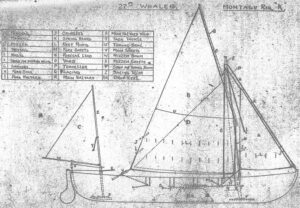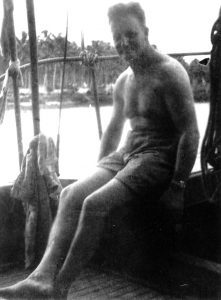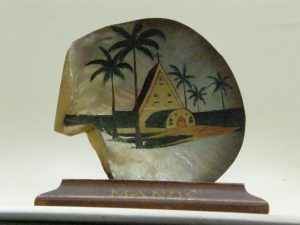Dear Editor In the latest issue of the Review (June 2014) is a very interesting article by Kingsley Perry about the 1963 Whitsunday Whaler Incident. In both the article and ...
Letter: SS Kanowna – did she have a mutiny?
Dear Editor I am a volunteer researcher of the Society making sure what may become history, and ensuring an extension of past facts is correct, which is important. Each issue ...
Letter: HMAS Kuru
Dear Sir, I was very interested to read the article concerning the above ship which was included in the September 2013 issue of the Review. My father was Commanding Officer ...
Letter: HMAS Platypus and the Darwin Blitz February 1942
Dear Editor I have just read G. W. Ireland’s recounting of his experience in Darwin during the first and continuing raids and I would like to add that my father, ...
Letter: Manus Island
Dear Sir, I read Jerry Lattin’s treatise on Manus Island in the June edition of the NHS Review with great interest. My father, Chaplain Patrick Helyer ALCD, FRGS, RAN (Retd), ...
Letter: Sea mine
The article by Sub-Lieutenant N.J. Laing, RAN in the June 2013 Review quotes the myth that the sea mine ‘accounted for more shipping losses than any other weapon’ during World ...
Letter: The Phantom Paradise
I refer to the article The Phantom Paradise in the September 2013 edition of the NHR and offer a little more information on the doctor. In November 1882, the Queensland ...
Letter: Sydney Sharp-Shooter and the Zero
Dear Editor On page 23 of the Naval Historical Review (March 2013), the statement is made that Sergeant Hajime Toyoshima (alias Tadeo Minami) captured on 19 February 1942 was the ...
Letter: Gallipoli and Other Stories
Dear Editor, I thoroughly enjoyed the March 2013 edition of the Review, thank you. I think it’s your best to date but I beg to take issue with a couple ...
Letter: Talbot-Booth and Sydney/Kormoran
Dear Editor No one on earth knows what information HMAS Sydney II was carrying in regards to ships’ identities either by book, signal or personal knowledge. What we do know ...


